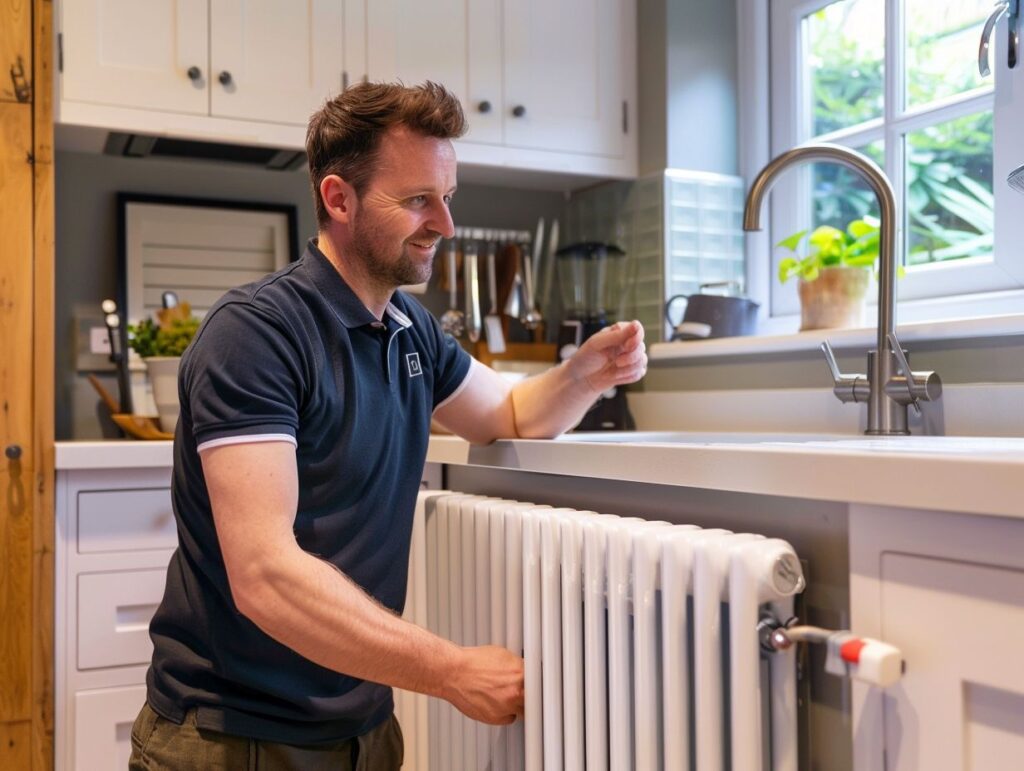If you are considering replacing your kitchen radiator and are unsure about the related costs, this article will explore the importance of a kitchen radiator. It will also discuss the factors that influence the cost of replacement, the average expenses to expect, and whether choosing a DIY approach or seeking professional help is more appropriate.
In addition, valuable tips on cost-saving methods for replacing your kitchen radiator will be shared. Discover more insights on this essential home feature.
Key Takeaways:
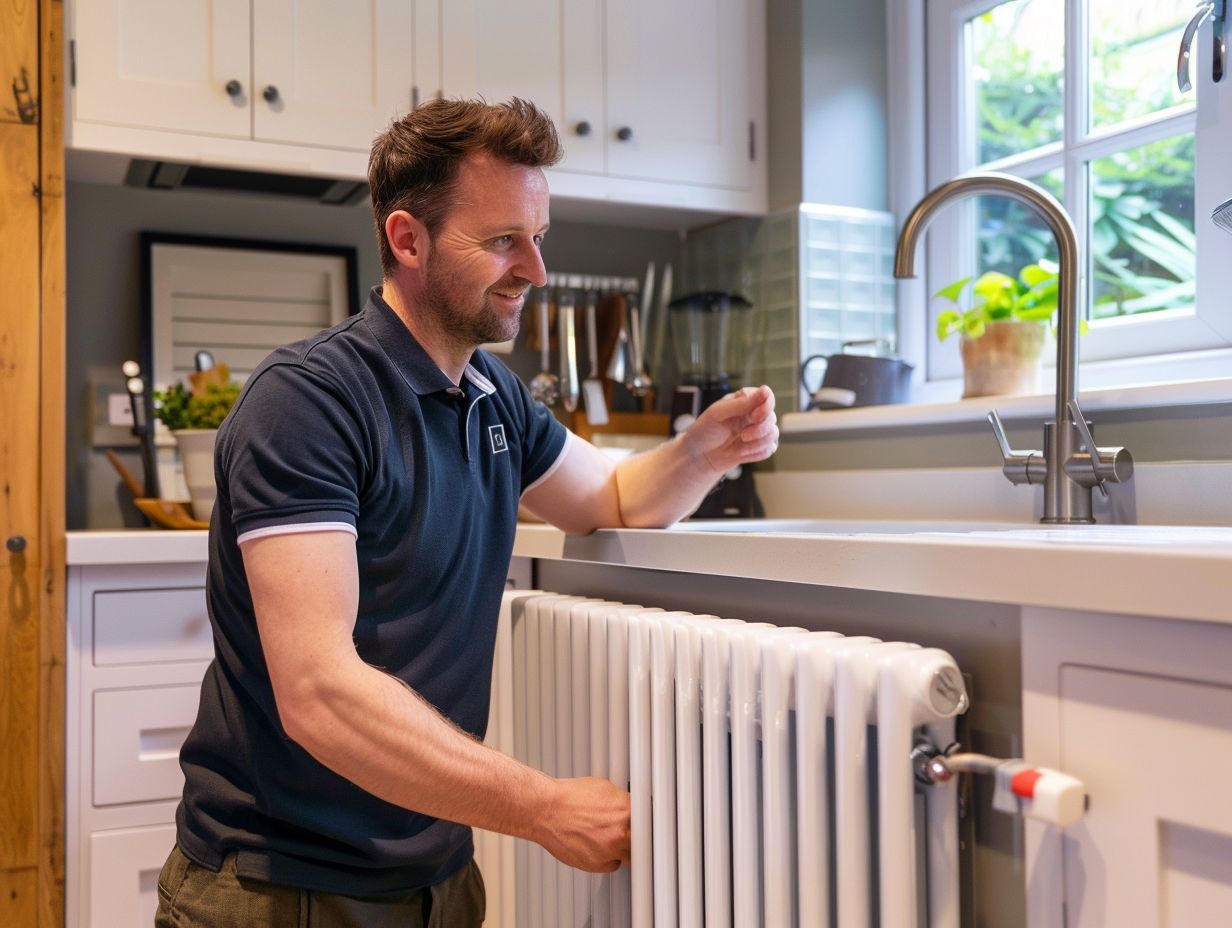
- Replacing a kitchen radiator is an essential task to ensure proper heating and comfort in your home.
- The cost of replacing a kitchen radiator depends on factors such as size, type, installation, and additional materials or services.
- Hiring a professional may be more expensive, but it can ensure a proper and safe installation, while DIY can save money but may require more effort and time.
Factors Affecting the Cost of Replacement
When considering the cost of replacing a kitchen radiator, several factors come into play. The size and type of the radiator, installation expenses, labour costs, and the necessity for extra materials and services all contribute to the overall expense.
The choice of radiator for replacement is a key determinant of cost. Different radiator models, such as cast iron, vertical, or designer radiators, come with varying price tags. Size is also a significant factor, with larger radiators requiring more materials and labour for installation.
Labour costs can fluctuate depending on the complexity of the installation process, particularly if adjustments to the existing plumbing system are necessary. Additional services like radiator disposal, system flushing, or pipework alterations can also increase the total cost of the replacement project.
Size and Type of Radiator
The size and type of radiator you select for your kitchen can have a significant impact on the total cost of replacement and installation.
For example, choosing a larger radiator to effectively heat a spacious kitchen might necessitate a higher initial investment due to increased material expenses and potential complexity in installation.
Likewise, specialised radiators tailored for specific heating requirements, such as vertical column radiators or designer models, may also carry a premium price tag.
Additional factors like the necessity for custom fittings or adjustments to accommodate unique radiator types could further elevate the replacement expenses.
It is essential to thoughtfully evaluate your needs and financial constraints when picking the appropriate radiator for your kitchen to strike a balance between performance and cost-effectiveness.
Installation and Labour Costs
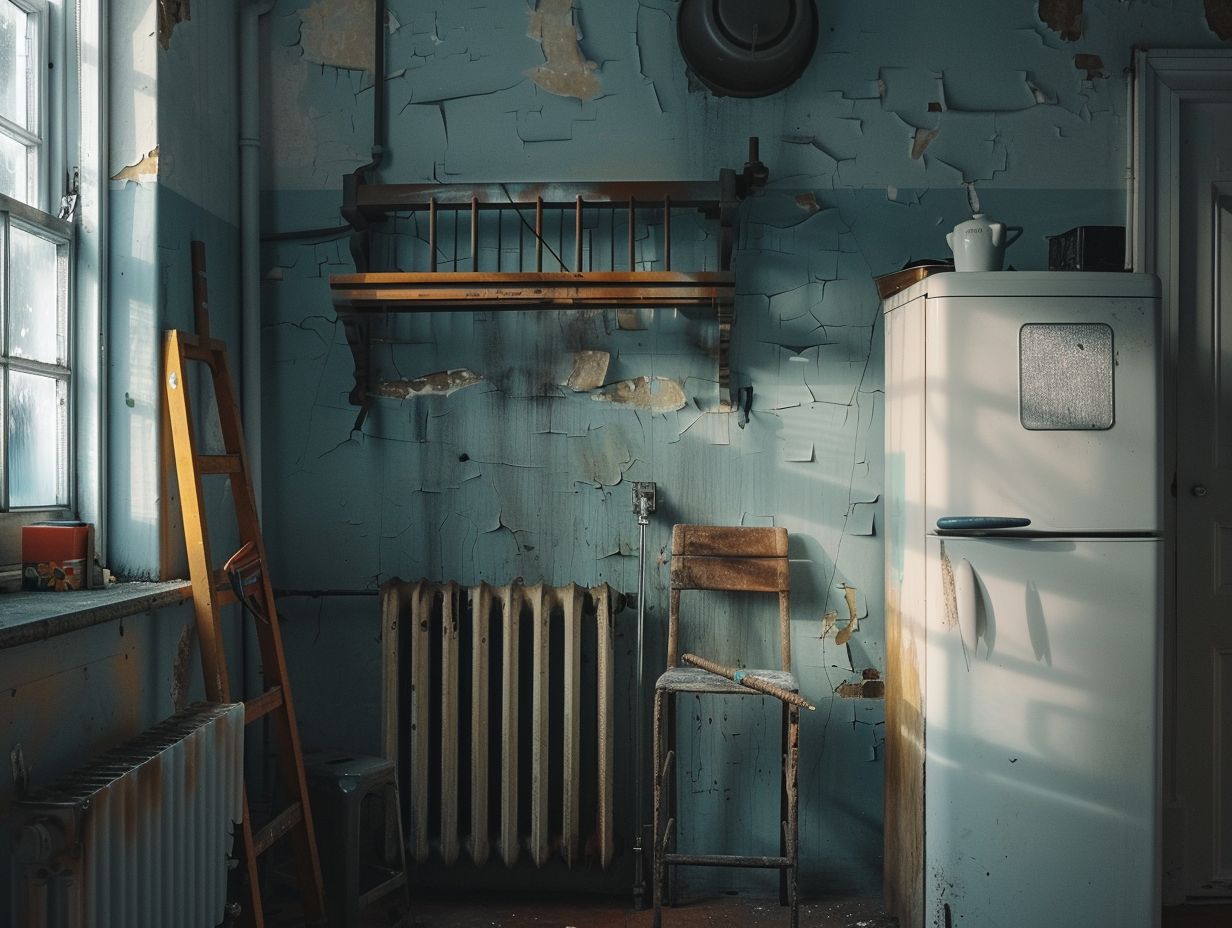
When replacing a kitchen radiator, you will find that installation and labour costs are a significant part of the expenses involved. Professional expertise and time are crucial for a successful installation process.
It is essential to understand that proper installation of a radiator is key to its efficient operation and durability. Skillfully using tools, having knowledge of plumbing systems, and paying attention to detail are essential for ensuring that the radiator functions optimally.
The amount of labour required for installation can vary depending on the complexity of the project. Some installations may only take a few hours, while others could extend over a day or more.
These variables directly impact the overall project cost, emphasising the importance of considering both material and labour expenses when planning for a radiator replacement.
Additional Materials and Services
When considering the cost of replacing a kitchen radiator, you should take into account not only the radiator itself and labour expenses but also additional materials and services. These supplementary materials may include pipes, valves, and bleeding equipment, which are essential for the efficient and safe operation of the radiator system.
The quality of these components is crucial for the overall performance of the radiator. Additionally, specialised services such as air bleeding and boiler inspections are necessary to ensure that the new radiator is installed correctly and functioning optimally.
While these services add to the total expenses of the replacement process, they play a vital role in the cost estimation for replacing a kitchen radiator.
Average Cost of Replacing a Kitchen Radiator
The average cost of replacing a kitchen radiator can vary depending on the specific requirements of the job. Factors that influence the cost include the size and type of the radiator, installation complexities, labour charges, and any additional materials or services needed.
Various factors such as the location of the radiator within the kitchen, necessary plumbing modifications, accessibility of the installation area, and the contractor’s experience can all play a role in determining the overall cost.
Additionally, the quality of the new radiator, whether it is a standard model or a more high-end design, will impact the total expenses.
It is important to take into account these different elements when estimating the cost of replacing a kitchen radiator, as they can have a significant effect on the final price of the project.
Breakdown of Expenses
When replacing a kitchen radiator, your expenses will be broken down into different categories. The costs associated with this project include the price of the radiator unit itself, installation and labour charges, additional materials, and any specialised services that may be required for a successful replacement.
The cost of the radiator unit is a significant part of your total expenses and will vary depending on factors such as size, brand, and efficiency rating.
Installation and labour charges are also essential components of the overall cost, with variations based on the complexity of the installation and the expertise of the professionals hired. Additional materials like piping, valves, brackets, and insulation will contribute to the total cost and can add up quickly.
If specialised services such as wall modifications or system flushing are necessary for the replacement project, these services will introduce further expenses into the breakdown of your budget.
DIY vs Hiring a Professional
When deciding between a do-it-yourself (DIY) approach and hiring a professional for a kitchen radiator replacement job, you should consider factors such as your skill level, time availability, and the complexity of the installation.
Undertaking a DIY radiator replacement can be a cost-effective choice if you have experience working with plumbing systems and are comfortable using tools. It provides an opportunity for a sense of achievement and the ability to customise by selecting the radiator.
However, DIY projects demand a significant amount of time, potential trial and error, and possibly acquiring or renting specialised tools.
On the flip side, choosing a professional service guarantees precise installation, warranty coverage, and saves you time and effort. Professionals possess the expertise to address unforeseen challenges and ensure adherence to safety regulations.
Pros and Cons of Each Option
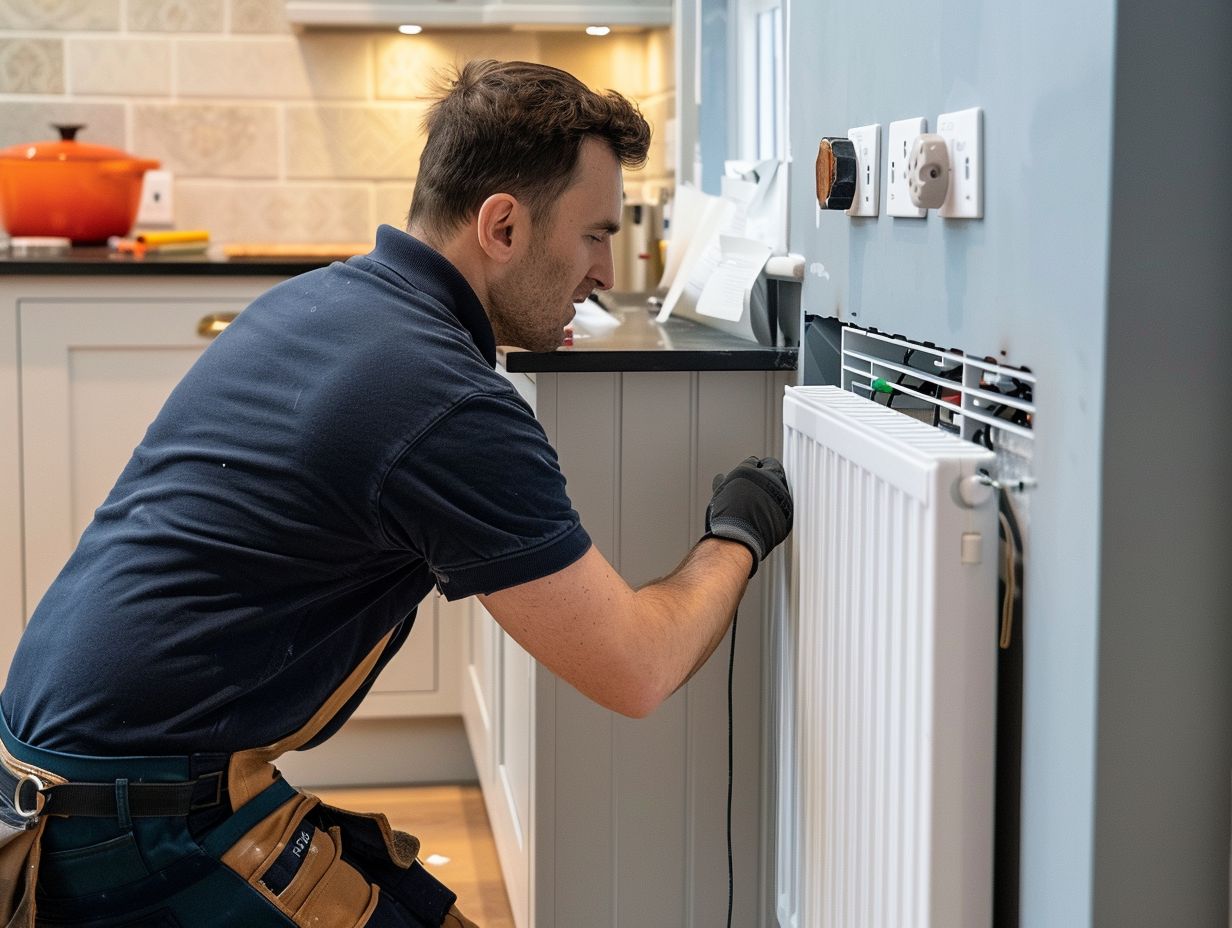
When considering a kitchen radiator installation, you may weigh the options of DIY replacement versus hiring a professional. Each approach has unique advantages and disadvantages that warrant careful consideration before making a decision.
Opting for a DIY radiator replacement may appeal to individuals looking to save on installation expenses and are willing to dedicate time to learn and execute the installation process independently. This route can offer a sense of achievement and the flexibility to customise the installation to align with personal preferences.
On the other hand, professional services guarantee expertise, efficiency, and quality work. Professionals bring specialised knowledge and tools to the table, reducing the likelihood of errors and ensuring compliance with safety standards. It is important to note that professional services typically come at a higher cost compared to taking a DIY approach.
Tips for Saving Money on Replacement
When replacing a kitchen radiator, consider implementing cost-saving strategies to minimise expenses and achieve a budget-friendly yet effective upgrade for your heating system.
- Opt for a DIY approach to remove the old radiator, clean the area, and install the new one instead of hiring professionals to reduce labour costs significantly.
- Compare prices at different shops or online platforms for radiators and related materials to find the best deals.
- Additionally, look for energy-efficient radiators as they may have higher upfront costs but can result in long-term savings on your energy bills.
- Properly maintaining your new radiator and ensuring its efficient functionality can help prevent costly repairs in the future.
Cost-Saving Strategies
By exploring various cost-saving strategies, such as comparing quotes from multiple professionals, repurposing existing materials, or considering energy-efficient radiator options, you can significantly impact the overall expenditure on a kitchen radiator replacement.
Opting for DIY installation can help cut down labour costs, while sourcing materials from wholesale suppliers or online marketplaces can often provide discounts. Another effective tactic is to schedule the replacement during off-peak seasons when contractors may offer reduced rates.
Homeowners can also explore government rebates or tax credits for choosing energy-efficient models, further reducing the financial burden of the project. By combining these measures, you can successfully renovate your kitchen with a new radiator while staying within a reasonable budget.
Frequently Asked Questions
What is the average cost to replace a kitchen radiator?
The average cost to replace a kitchen radiator can range from $300 to $1,500 depending on the type of radiator, size, and installation fees.
What factors can affect the cost of replacing a kitchen radiator?
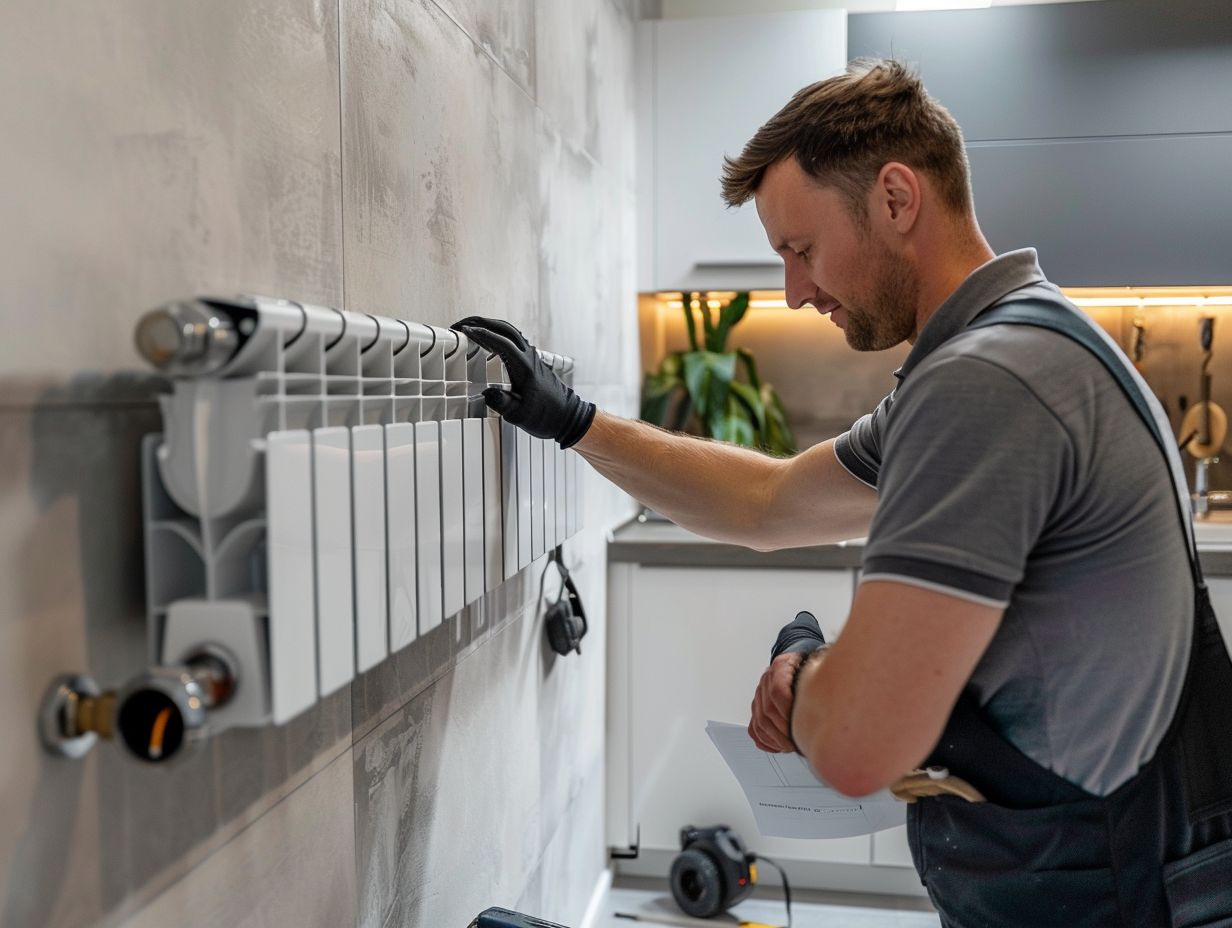
The cost of replacing a kitchen radiator can be affected by factors such as the type and size of the radiator, the complexity of the installation, and the cost of labour in your area.
Can I save money by replacing my kitchen radiator myself?
While it is possible to save money by replacing your kitchen radiator yourself, it is recommended to hire a professional for the job to ensure proper installation and avoid any potential hazards or damages.
How does the type of radiator affect the cost of replacement?
The type of radiator can greatly affect the cost of replacement. Traditional radiators are typically cheaper to replace than modern or designer radiators due to their simpler design and easier installation process.
Are there any additional fees to consider when replacing a kitchen radiator?
In addition to the cost of the radiator and installation, there may be additional fees to consider such as removal and disposal of the old radiator, any necessary repairs or upgrades to the heating system, and potential permits or inspections.
Can I negotiate the cost of replacing a kitchen radiator?
It is possible to negotiate the cost of replacing a kitchen radiator with the installation company. However, it is important to keep in mind that the quality of work and materials used should not be compromised in order to lower the cost.

